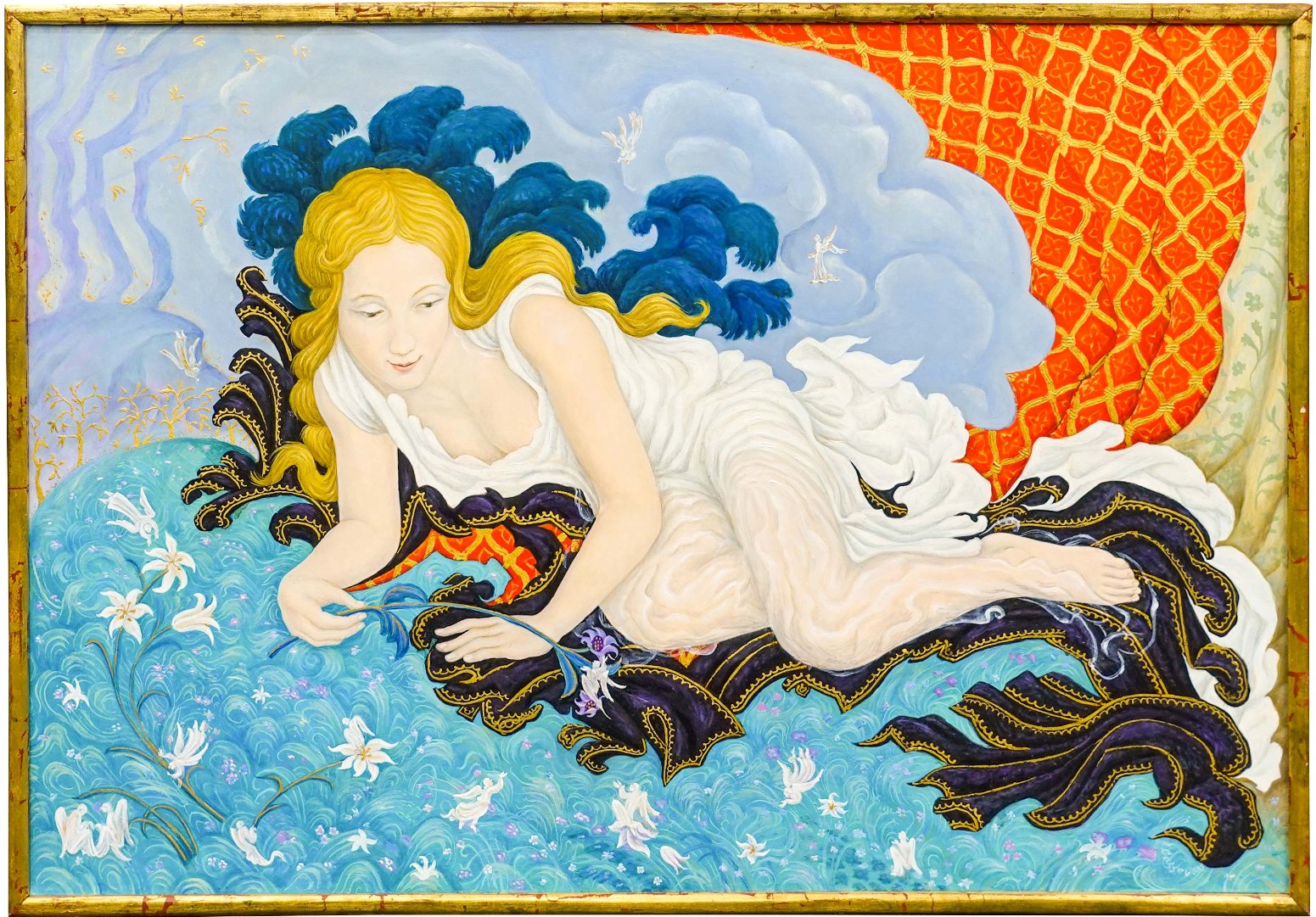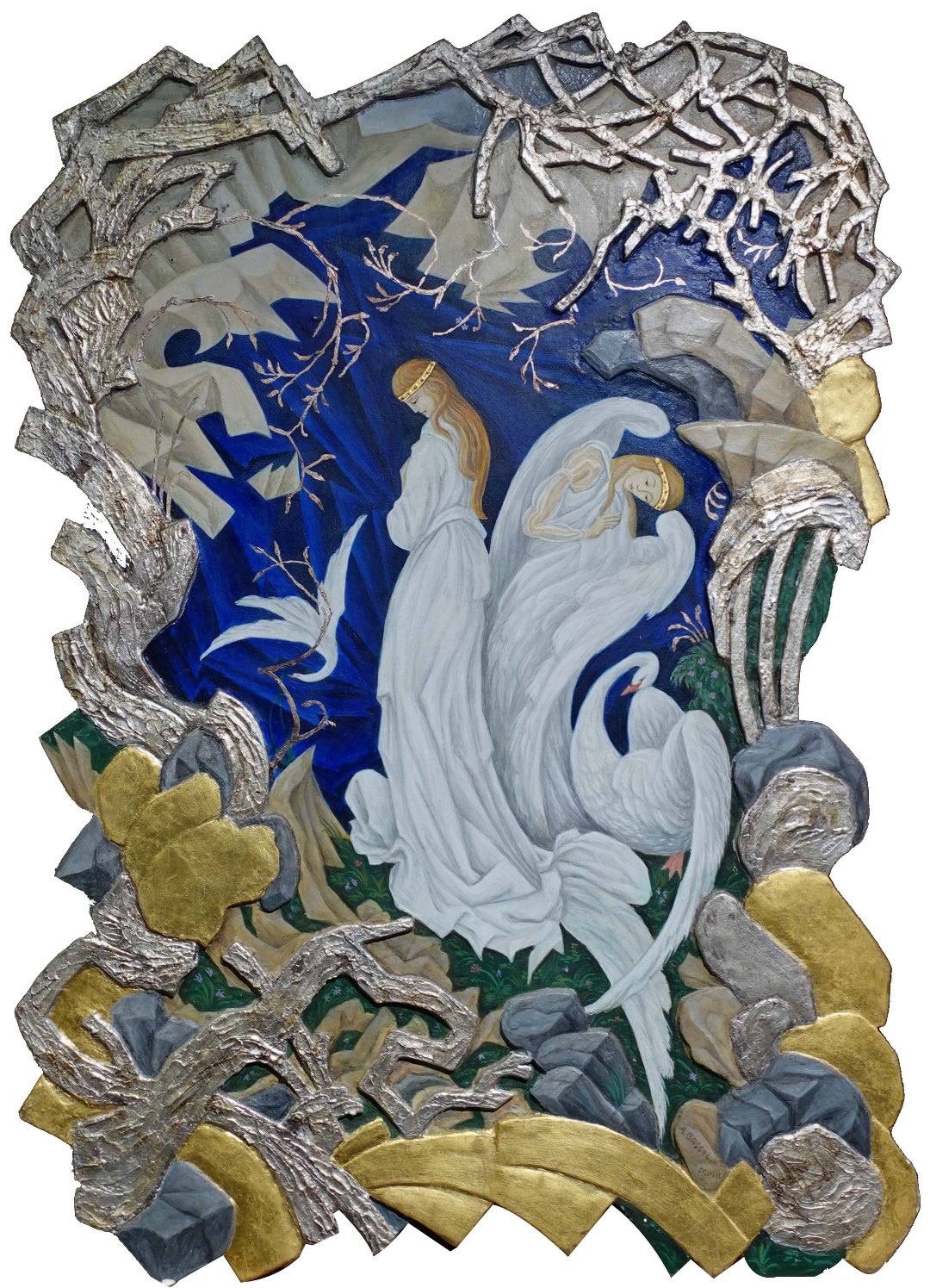Russian Iconography & Avant-Garde in the Art of Alexander Gassel

Russian iconography is considered to be one of the most aesthetic and magnificent forms of religious art. Sacred icons and religious paintings have long become the symbol of ancient knowledge and dedication to traditional techniques. It is not common to see this unique form of art mixed with something as experimental and radical as avant-garde, but it seems like now you have such an opportunity. “Painted Poetry,” Alexander Gassel’s retrospective exhibition at the Museum of Russian Icons in Clinton, is something you definitely do not want to miss!

Alexander Gassel, Girl and the Elves, 2005
Painted Poetry – a mix of Russian iconography and avant-garde
“Painted Poetry” is a solo exhibition of Alexander Gassel’s artworks. The artist is most famous for his pioneering experiments in uniting traditional Russian iconography and avant-garde art, ancient symbols and contemporary subjects. Many compare Gassel’s art to Malevich’s and Kandinsky’s works, while others distinguish the striking impact of Art Deco on his techniques. Both ideas are correct. Alexander Gassel masterfully combines things of distinctive nature, pushing the boundaries of contemporary art.

Alexander Gassel, Swan Lake, 2000
The retrospective exhibition is hosted by the Museum of Russian Icons in Clinton, MA. The curator of the event is Lana Sloutsky. After being closed for some time due to the coronavirus pandemic, the venue reopens to the public on March 5. If everything goes as planned, the exhibit will run through September 2021.
Alexander Gassel is an outstanding Russian-born American artist and designer incorporating different media and techniques in his art. That is one of the main reasons why his works look so elegant, subtle, and harmonious. In this light, “Painted Poetry” is a must-visit event that offers the viewers a modern look at Russian iconography and avant-garde art.
If you live somewhere near Clinton, you can visit “Painted Poetry” without much effort starting from March 5. If you do not have such a chance, you can still enjoy the exhibition because it is available online on the official website of the Museum of Russian Icons.
